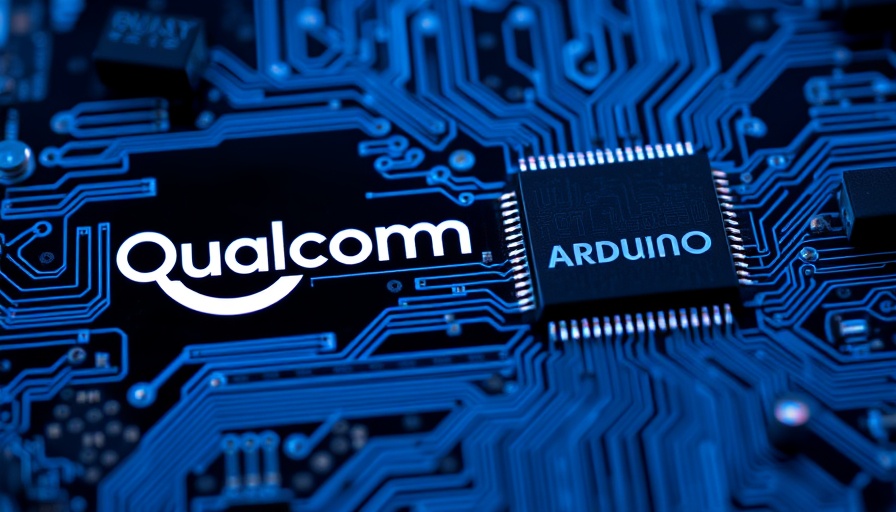
Diving into the Future of Robotics and AI with Qualcomm
Qualcomm’s recent acquisition of Arduino is more than just a business maneuver; it’s a bold step towards reshaping the landscape of robotics and artificial intelligence (AI). By integrating Arduino's renowned open-source hardware and software with its pioneering edge computing technologies, Qualcomm seeks to provide developers with an unparalleled platform for innovation. In a world where accessibility to advanced tech is crucial for progress, this partnership promises to democratize AI development for millions around the globe.
Why This Acquisition Matters for Developers
For the thriving community of 33 million Arduino enthusiasts, the big question is: what does this mean for their beloved platform? Both companies have reassured users that Arduino will maintain its independence and commitment to an open-source philosophy. This is significant in ensuring that accessibility and innovation remain at the forefront. As Fabio Violante, CEO of Arduino, stated, the collaboration would "supercharge our commitment to accessibility and innovation" while promising that core values would persist.
A New Generation: Introducing the Arduino UNO Q
The acquisition marks a pivotal moment with the launch of the new Arduino UNO Q, powered by Qualcomm’s Dragonwing QRB2210 processor. This dual-brain single-board computer, capable of running both Linux and real-time applications, is tailored for a range of innovative solutions - from smart homes to industrial automation. Pricing is set to be competitive, making advanced technology broadly available at a cost-effective rate.
The Tech Ecosystem Shift: What’s Next?
Amidst a stagnating smartphone market, Qualcomm’s strategic acquisitions, including Edge Impulse and Foundries.io, have been instrumental in expanding its edge computing offerings. This move aims to reduce reliance on traditional mobile markets by providing robust resources for IoT devices and AI solutions. The integration of Arduino's community-driven approach with Qualcomm’s technological prowess could be transformative for developers and creators.
The Implications for Edge Computing and AI
With Arduino forming a foundational piece of Qualcomm’s edge AI stack, we can expect an influx of innovative applications that are not only intelligent but also energy-efficient. Edge computing will allow devices to process data closer to its source, significantly improving performance in applications ranging from smart devices to industrial sensors. This technological evolution indicates a profound shift in how we interact with our environments and manage automation.
Facilitating Growth in the Developer Community
The partnership aims to bridge the gap between skilled engineers and enthusiastic hobbyists. By providing tools like the Arduino App Lab, an IDE designed to facilitate workflows across various programming environments, Qualcomm is set to enhance developer productivity and encourage experimentation in AI solutions. The future of innovation hinges on the ability to teach and inspire the next generation of creators.
Final Thoughts: Embracing the Change
As Qualcomm pushes forward into edge computing, the acquisition of Arduino signifies a promising future for both robotics enthusiasts and developers. It is a case study in how tech mergers, when approached thoughtfully, can foster innovation instead of stifling it. For anyone involved in technology, staying informed of these changes is crucial, as they will inevitably shape our technological landscape.
Empowered by this acquisition, developers and innovators will find themselves at the forefront of creating intelligent solutions that not only meet today’s demands but also anticipate tomorrow’s challenges.
 Add Row
Add Row  Add
Add 




Write A Comment